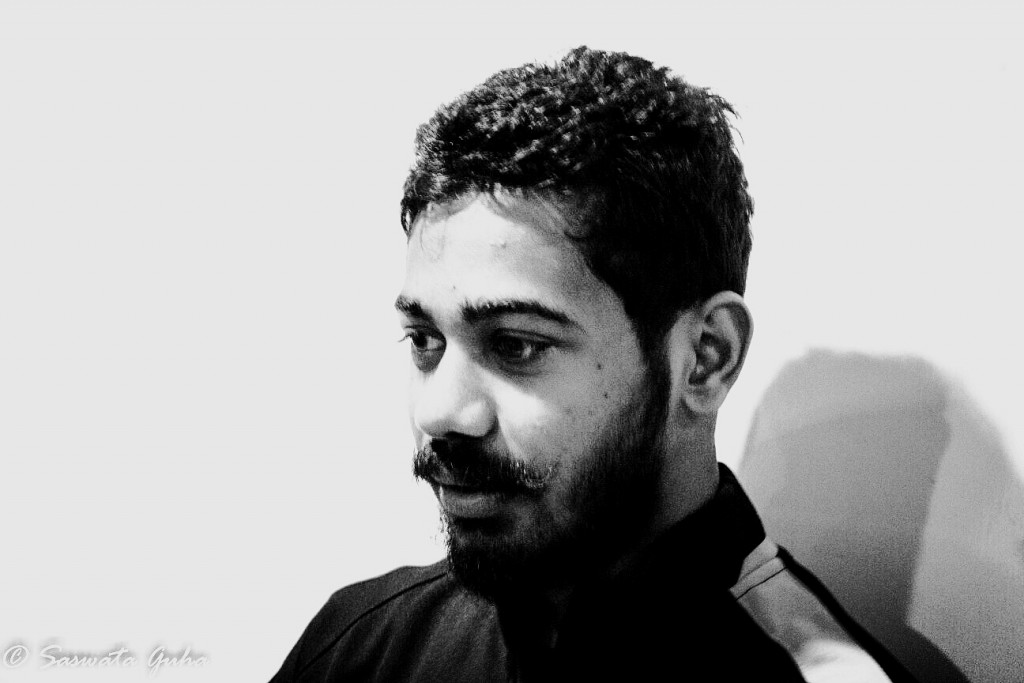In this blog post, Pramit Bhattacharya, Student, Damodaram Sanjivayya National Law University writes about the basics of Corporate Debt Restructuring. The blog post also dwells into the concept of CDR in the Indian context and highlights the different stages of the process of restructuring. The blog post also looks into the prevailing trends in the CDR Mechanism.
What is Corporate Debt Restructuring?
Corporate Debt Restructuring or CDR is a voluntary process under which banks and financial companies aid those companies, who are facing financial difficulties due to internal or external factors, to restructure their debts. CDR is a non-statutory process. The motive behind this mechanism is to provide timely support to the companies and revive them. Another motive is to protect the interest of the stakeholder, investors, and other parties who are acting as lenders to such enterprises. CDR is available to those companies which have availed credit facility from more than one financial institution. These financial come together to help the company for the benefit of all the interest parties.
CDR and Insolvency
The concept of restructuring comes into picture when a company is facing financial difficulties, and as a result of which, it is on the verge of insolvency. Restructuring a company is done when the business operations carried out by the company is viable, but still owing to some factors, it is incurring losses. These factors can be a change in government policy, change of interest rates, change in the value of currency, etc. these factors are obviously beyond the control of the company. In such cases CDR plays an important role in giving the company another chance to survive in the market. The basic objective of CDR is to maintain the viability of the company in the long run so that interested parties do not incur any losses. The interest parties enter into different arrangements with the company like exchanging their debt for some number of shares (referred to as debt-equity swap), or forgoing a part of the loan, or the interested parties agree to a fixed moratorium period where both the parties do not institute any action against each other during the said period.
CDR is a part of the external mechanism. In the case of CDR, the company has to ensure that it has at least some assets to support the reconstructing process because once a company enters into insolvency, it does not have much choice. Drawn out insolvency also compels the company to wind up its activities, and the company loses its “separate legal entity” status. But if proper restructuring is done, the company may get a new lease of life and continue with its business operations.
CDR can be done in a number of ways. Preference shares can be converted into equity shares; overall debts can be converted into shares, a part of debt can be waived by the creditors, Inter-Creditor Agreements can be modified, contingent claims can be revalued and settled, and assets and liabilities can be redistributed.[1] CDR includes different stages, such as making an agreement between the parties, consideration of the proposals between the parties and providing additional funds to the company at a higher rate of interest by the lenders so that the company can carry on its business activities and do not become insolvent.
Corporate Debt Restructuring in the Indian Scenario
The concept of CDR was introduced to the India when in the year 2001, the RBI came up with certain guidelines to be followed by banks and other financial institutions. The RBI stated that the concept of CDR is a non-statutory and voluntary process where if 75% of the creditors (by value) decide to aid the company, the other 25% of the creditors will also have t agree to help the company through the process of CDR. CDR is available only to those companies which have multiple bank accounts and has taken credit from multiple lenders. Also, the outstanding amount of debt of all the creditors and lenders should be 100 million or above in aggregate. It covers all categories of assets categorized by the RBI in terms of prudential assets classification standards. Cases which are filed with the Debt Recovery Tribunal, The Bureau of Industrial and Financial Reconstruction or any other case are qualified for reconstruction under CDR. A bank or a financial institution can refer for CDR if it has a 20% share in working capital or term loan of the company.[2]
The major benefit a creditor has from restructuring debts is that they are able to reduce the non-performing assets of a company through it.
CDR structuring in India
In India, the CDR structure has three levels-
- CDR Standing Forum
The CDRSF acts as a representative body for all the banks and the financial institutions who participate in the process of restructuring. This forum includes financial institutions and scheduled banks. Non-banking financial companies, co-operative banks, and regional rural banks are not a part of the form. The main function of the forum is to lay down policies and guidelines which are to be followed by the Empowered Group and the CDR Cell. This form also makes sure that the reconstructing process is implemented timely and efficiently. The forum provides a platform to the interested parties to solve the disputes peaceably. The CDRSF can review the decisions of the Empowered Group and the CDR Cell. Many big banks and lending houses are permanent members of the CDRSF.
- CRD Empowered Group
The function of the CDREG is to consider the preliminary report in all cases of restructuring, submitted it by the CDR Cell. It is the work of the CDREG to decide whether the reconstruction of debts is feasible and viable or not. Once the preliminary report is approved, a reconstructing package is made up by the CRD cell in unification with the institution which has the highest stakes in the company. The viability of the restructuring package is also checked by the Empowered Group.
- CDR Cell
The CDR Cell is the first authority to whom the application is made for the restructuring, and if the CDR Cell prima facie believes that the restructuring should be done to help the company, then it gives permission. After getting the application, the CDR Cell looks into various aspects like corporate governance of the company, financial status of the company, etc. based on which it sends its report to the Empowered Group. The CDR Cell should give its opinion within thirty days of receiving the application.
Prevailing Trends in India’s CDR mechanism[3]
- Looking at the recent trends, many infrastructure companies like steel and iron companies are at the top of the CDR list. One of the reasons for this can be that due to the slowing economy, the manufacturing sector is a bit down. Assets quality of the scheduled banks is also going down because of many delayed projects by the infrastructure sector.
- A recent trend which can be seen is that public sector banks have been more lenient that the private sector banks in sanctioning CDR packages. Taking an example, the Indian Overseas Bank has the highest rate of restricted assets at 9.7%. The IOB is followed by the Central Bank of India at 8.39%. Compared to these stats, restructured assets of banks like HDFC bank, ICICI Bank, and Axis Bank is below 2%.[4] It is important to note that the granting of CDR packages by public-sector banks have not helped them much as the rate of non-performing assets has not come down for them.
- One of the major drawbacks of the current CDR Mechanism is that the promoter director’s personal guarantee to the entire restructuring process is subject to misuse.
- Another disadvantage of the current mechanism relates to the liberal conversion of debt into equity, which is often allowed by the banks. This puts them in a disadvantaged situation. For instance, earlier the companies used to get an undue advantage by marking up the price of their equity shares, and providing preference shares to the banks, with limited voting rights. Also, there were no restrictions on the amount of debt which could be converted into preference shares. After RBI came up with guidelines regarding restructuring, the limit has been set at 10%, up to which debt-equity swap can be made, with regards to the preference shares. For instance, in 2010, Bheema Cement, got a restructuring package approved for itself and rescheduled its repayment of loans, in return for shares of the company and zero interest preference shares.
- Small banks complain that their professional interests are not taken care because of the nature of the guidelines that if 75% of the creditors by value approve of the package, then it is binding on the rest of the creditors also.
- Comprehending the problems. The RBI came up with some new guidelines for the process of CDR. For example, according to the new rules, promoters of the company are now required to bring in more number of equity shares, which has to deposit in an escrow account till the time the company is back on track again. Also, promoters have to suffer the first losses instead of the creditors and the banks. Banks have been given new rights. For example, they can complain to the Institute of Chartered Accountants of India if the banks feel that an auditor has given a clean balance sheet of a company which is going through financial problems. Banks have also been given the right to organize themselves in a Joint Lending Forum to protect their interest.[5] This forum will work with the debtors to put the loan back on track and can also invite Central or State Government officials if the Forum feels some policy changes are needed.
Concluding Remarks
While the CDR Mechanism has proved beneficial in many cases, there is still a lot of scope for improving the mechanism. Many problems still exist, such as foreign creditors do not want to be a part of CDR Mechanism in India because they think, it’ll be favorable towards the Indian parties. The interest of the small parties should also be taken care of. Also, many restructured cases turn into bad assets subsequently. Another important issue is that the new CDR guidelines don’t provide for sector-specific lending and provide broad guidelines, and therefore this might lead to unfair priority sector lending to few areas leaving out the rest.
[1] Roy Goode, PRINCIPLES OF CORPORATE INSOLVENCY LAW 481 (4th ed., 2011)
[2] About us, Genesis of CDR Mechanism in India, available at http://www.cdrindia.org/aboutus.htm
[3] http://www.lawctopus.com/academike/corporate-debt-restructuring-strategies-indian-legal-regime-2/#_edn3
[4] RBI makes it tough for firms to get away with loan default, The Financial Express, (27/02/2014), http://www.financialexpress.com/news/rbi-makes-it-tough-for-firms-to-get-away-with-loan-default/1229732
[5] Dinesh Unnikrishnan, Gammon India’s Corporate Debt Restructuring cleared, Livemint, (04/07/2013), http://www.livemint.com/Companies/HOIdTcBPI73tZG04H8uyGO/Gammon-Indias-corporate-debt-restructuring-cleared.html
 Serato DJ Crack 2025Serato DJ PRO Crack
Serato DJ Crack 2025Serato DJ PRO Crack











 Allow notifications
Allow notifications




Hi – Thanks for writing this piece to explain CDR in india! See that this piece is a recent piece. For my research I am more interested in looking for data on list of Indian companies went through CDR and those which exited how their finances has been since then. Can you please direct me to any website, blog or books in this regards?
Appreciate your help!